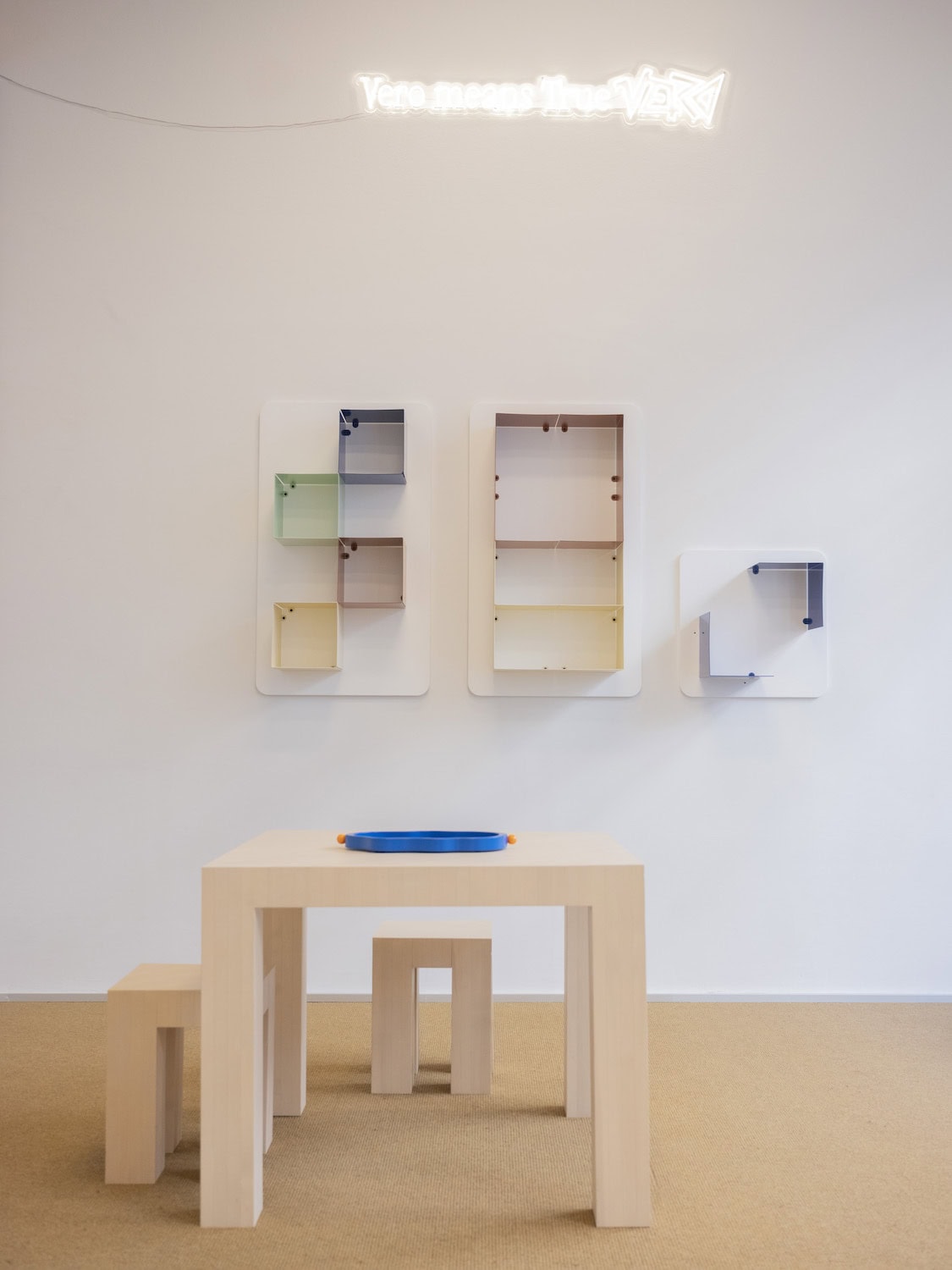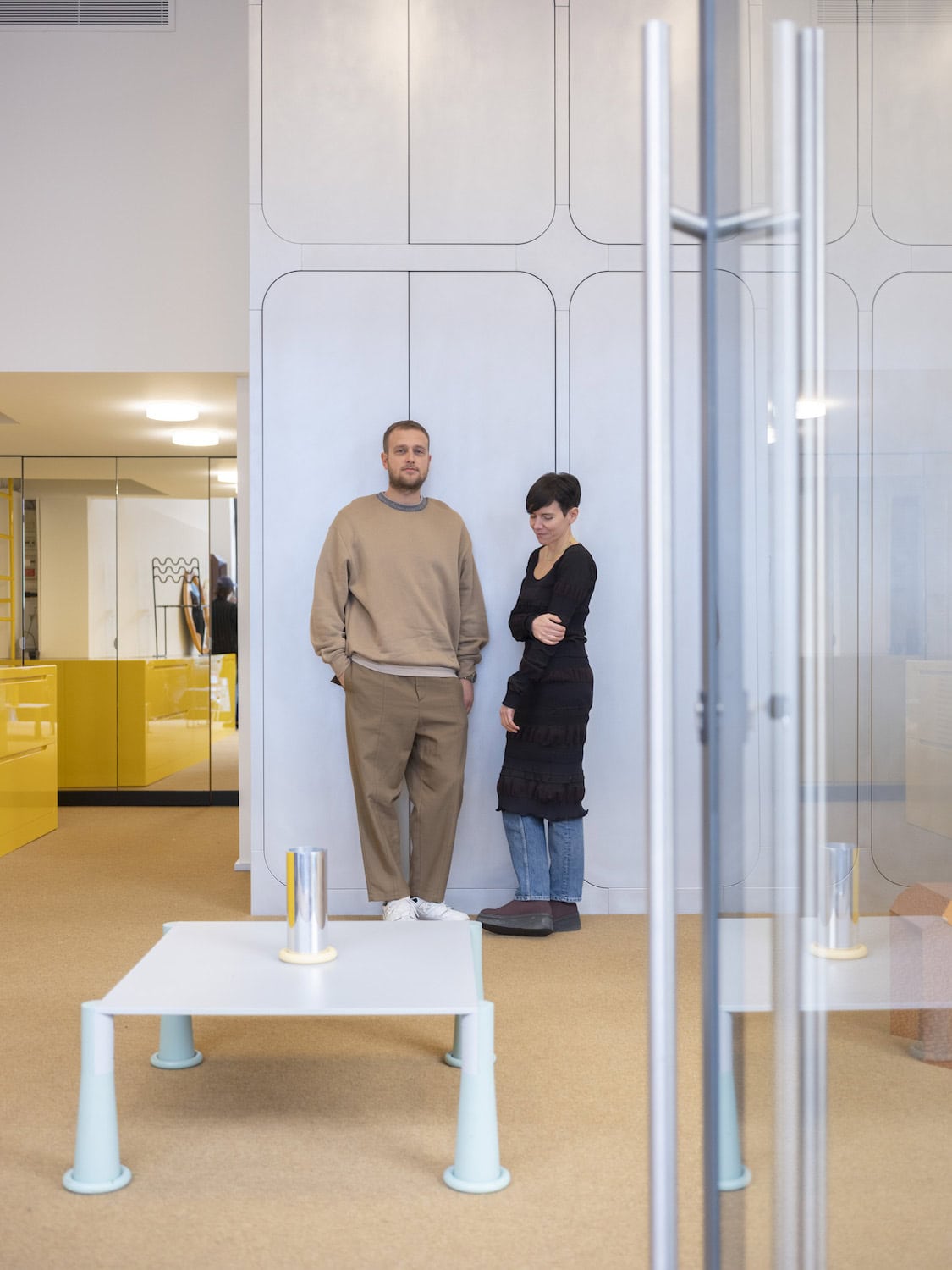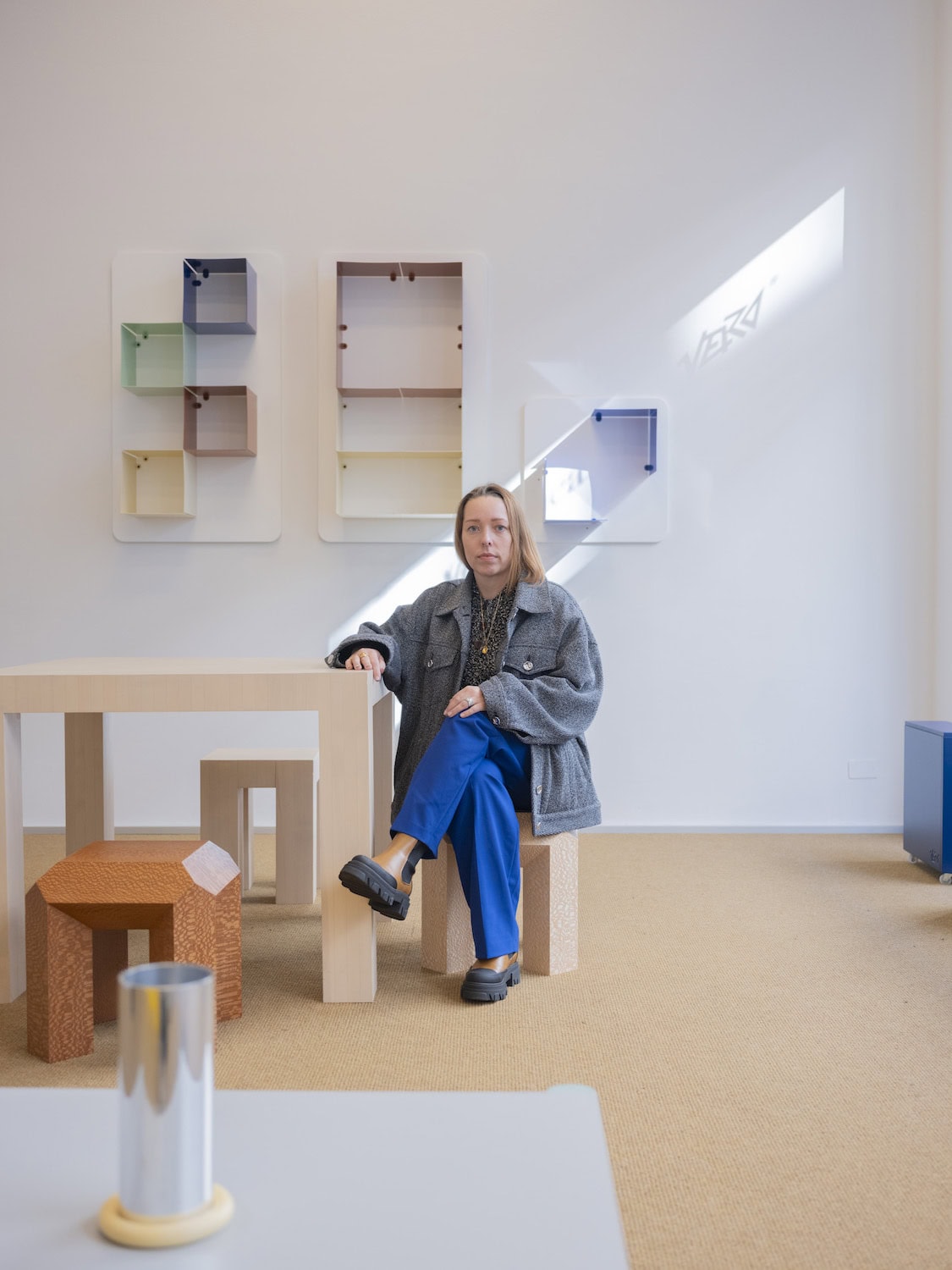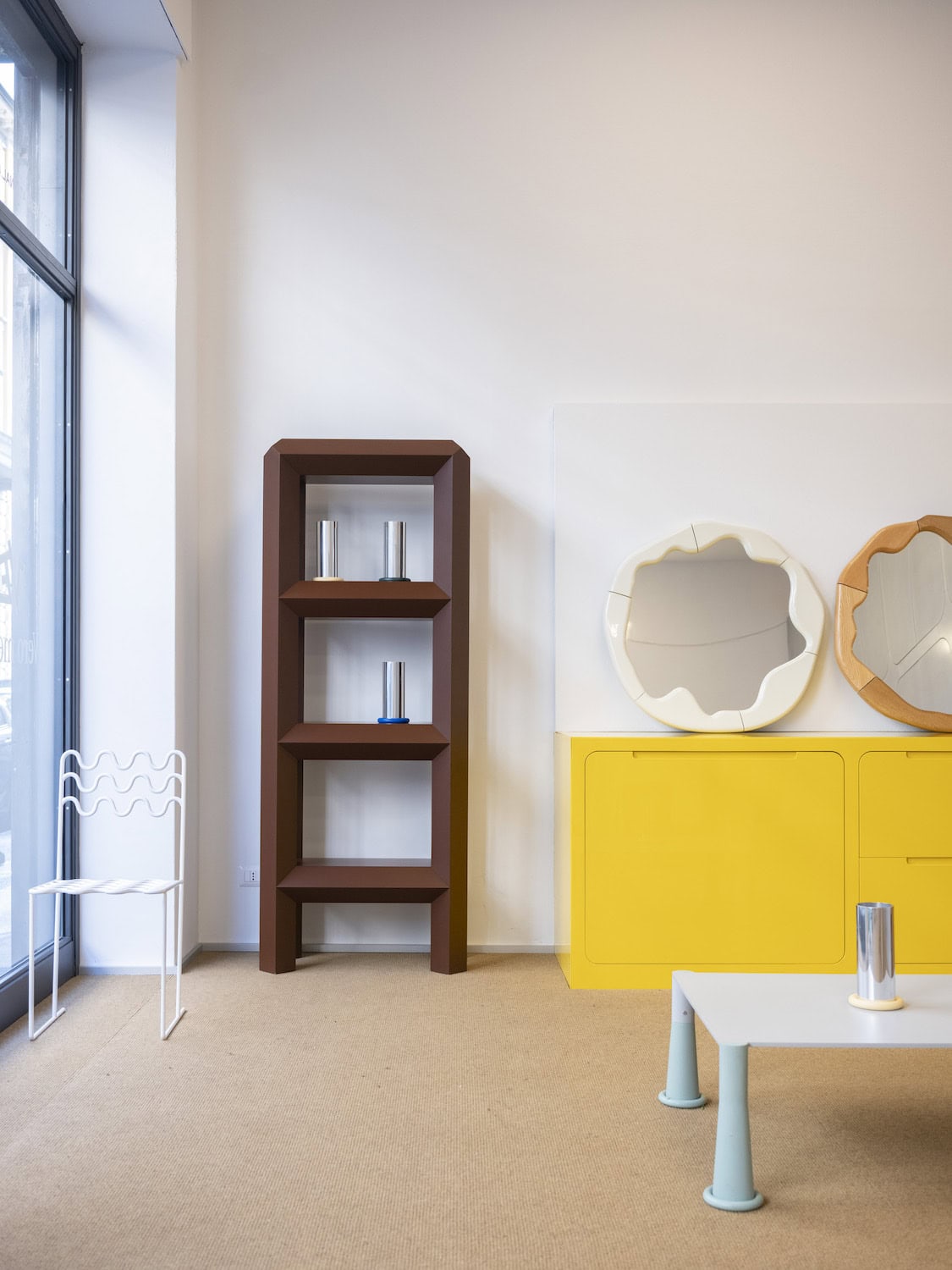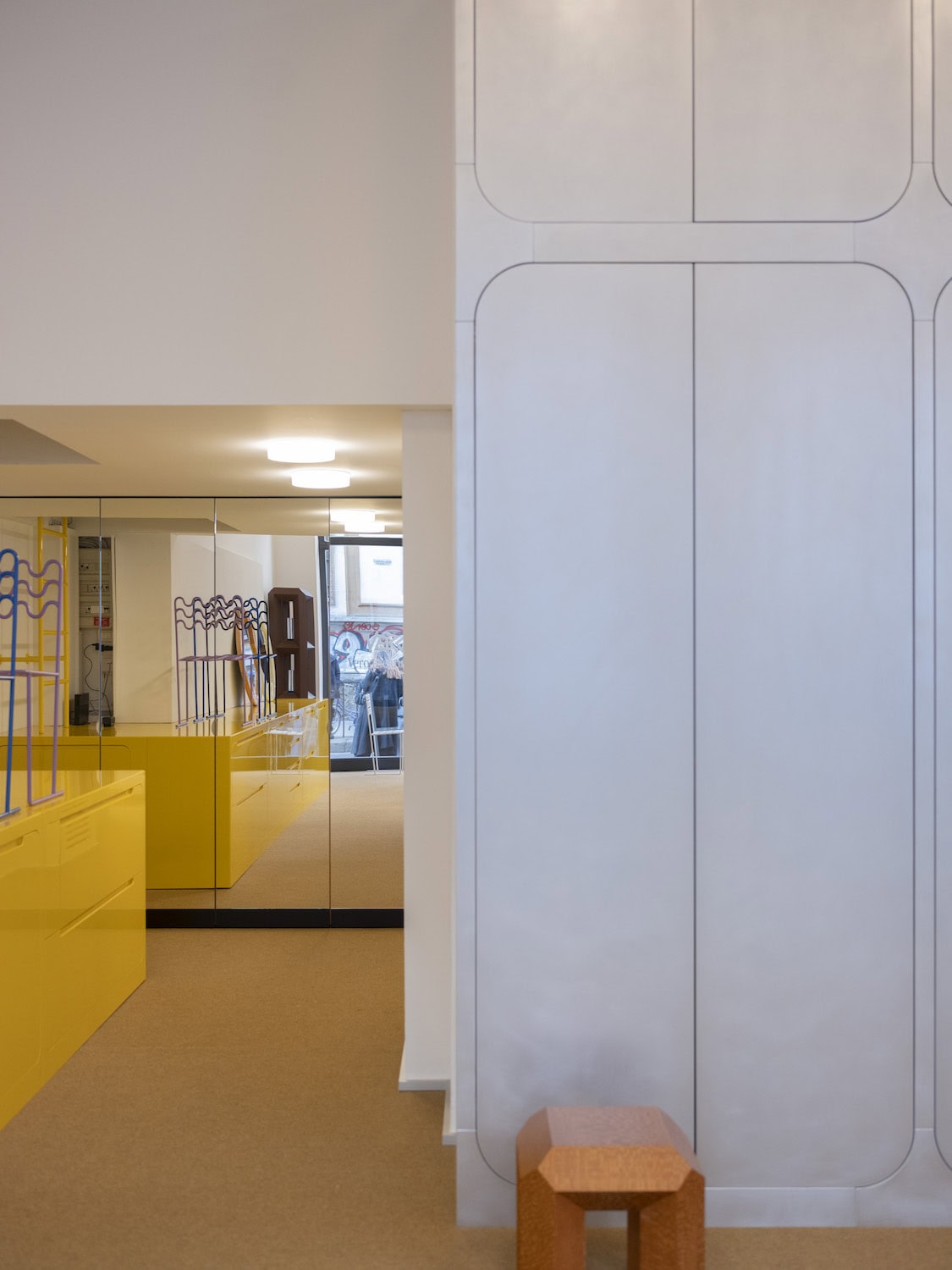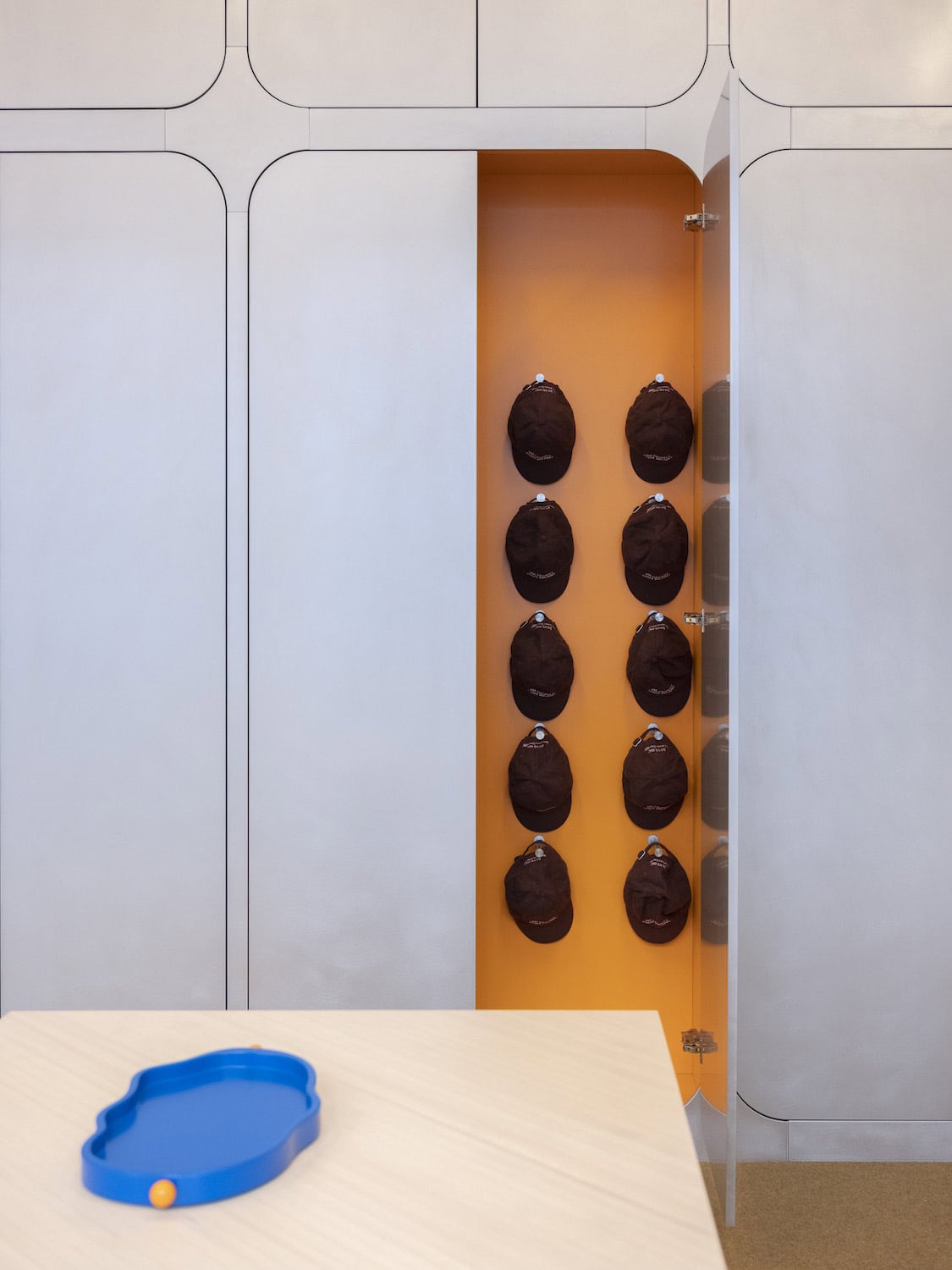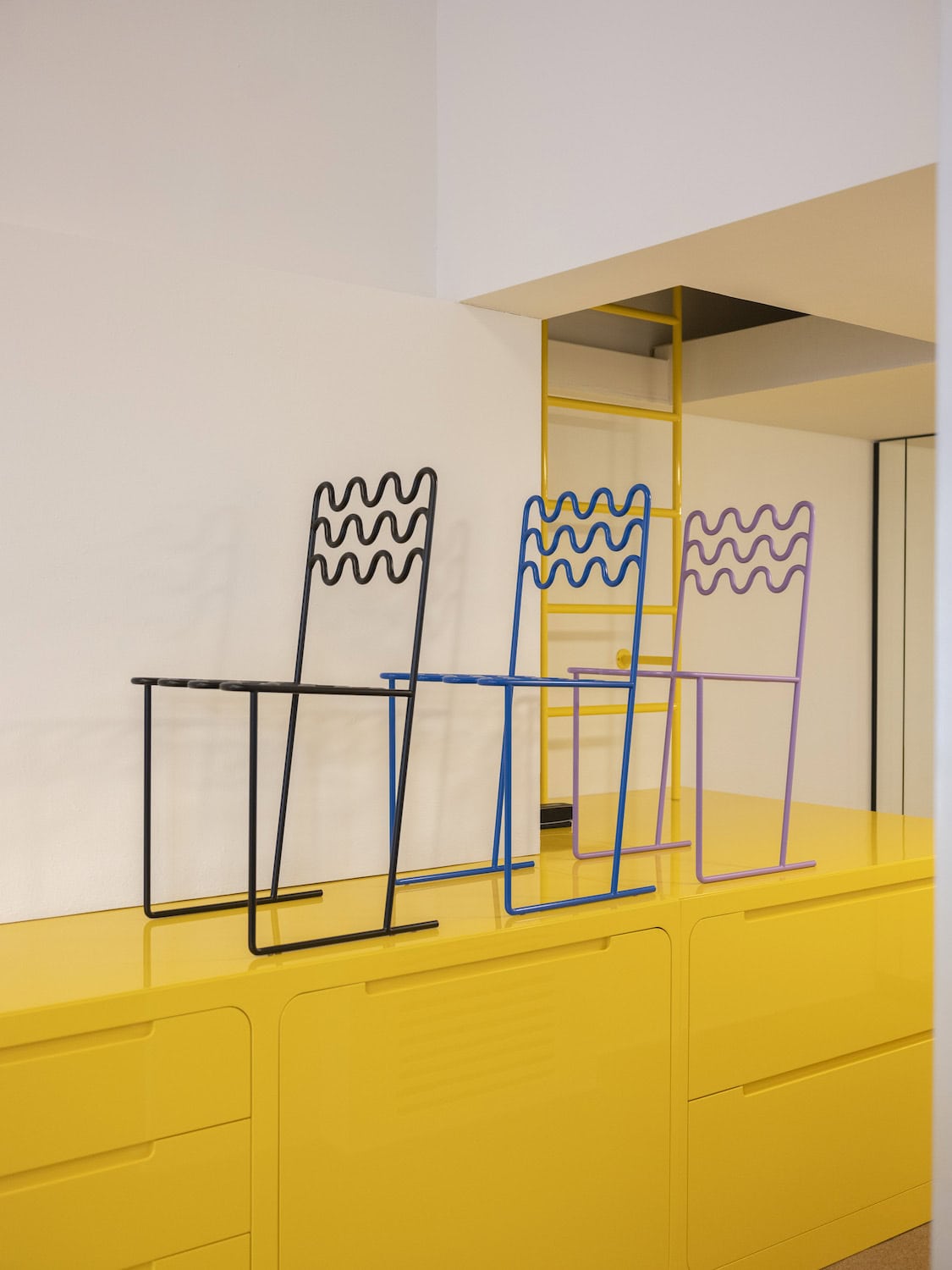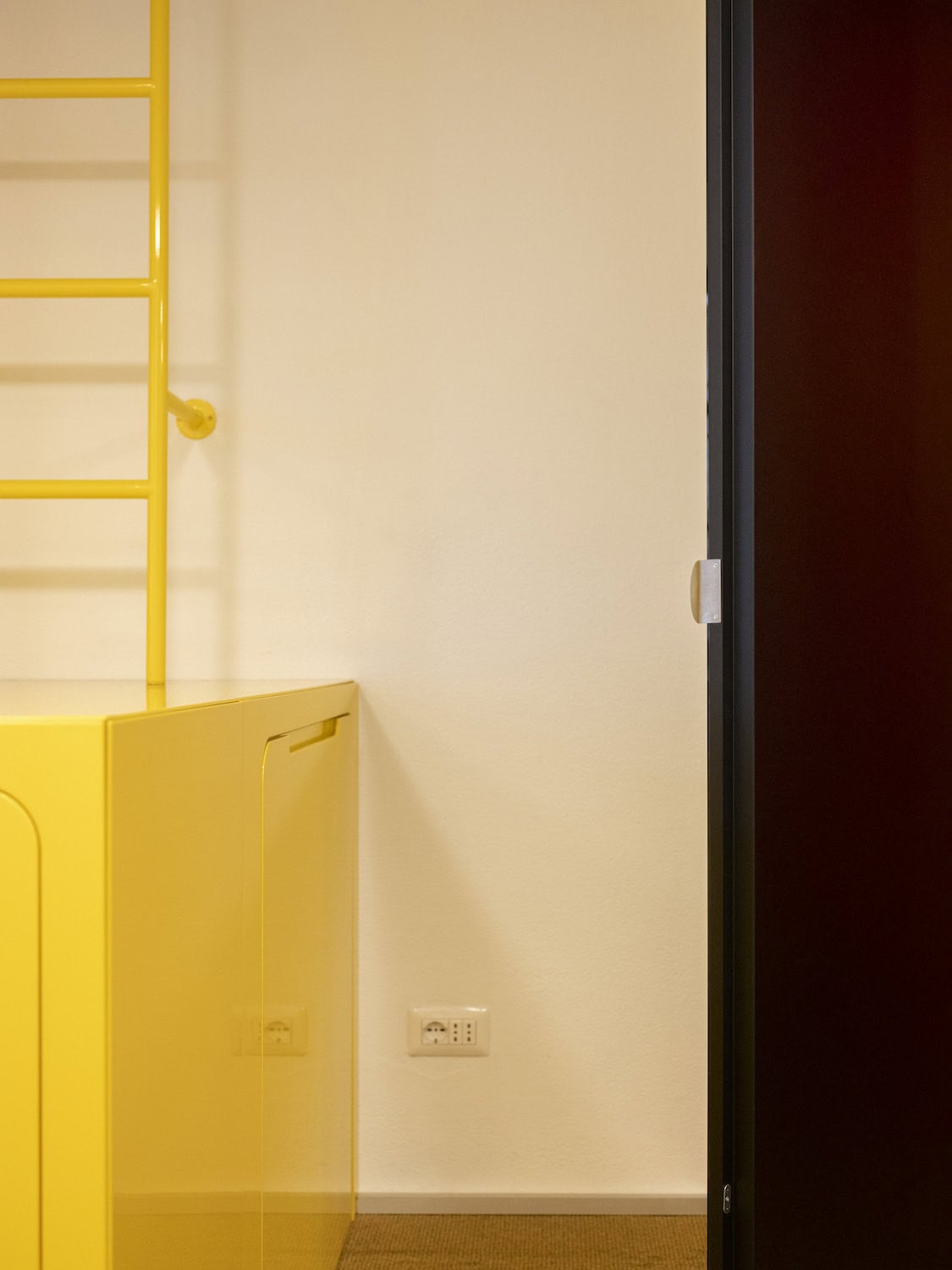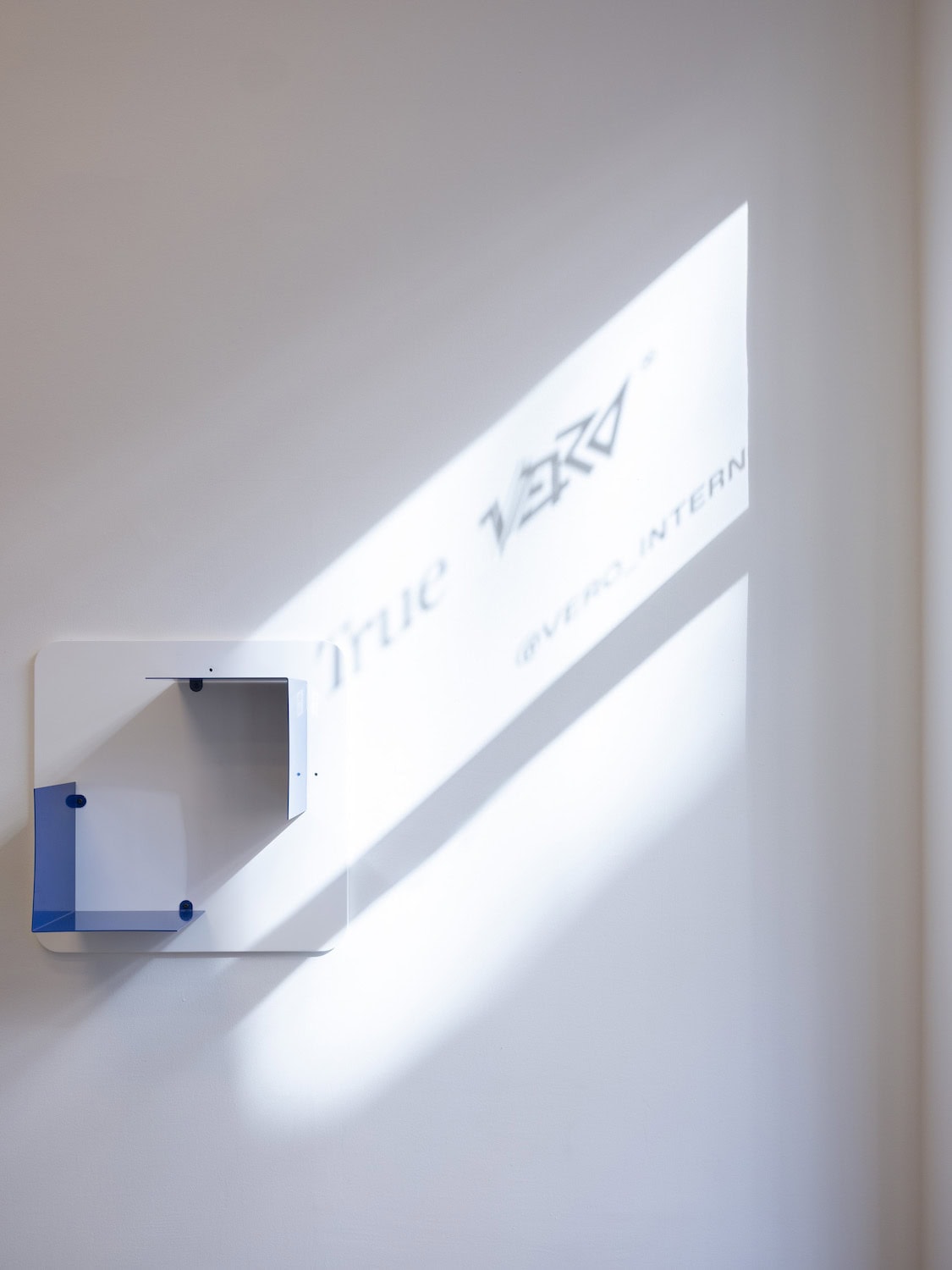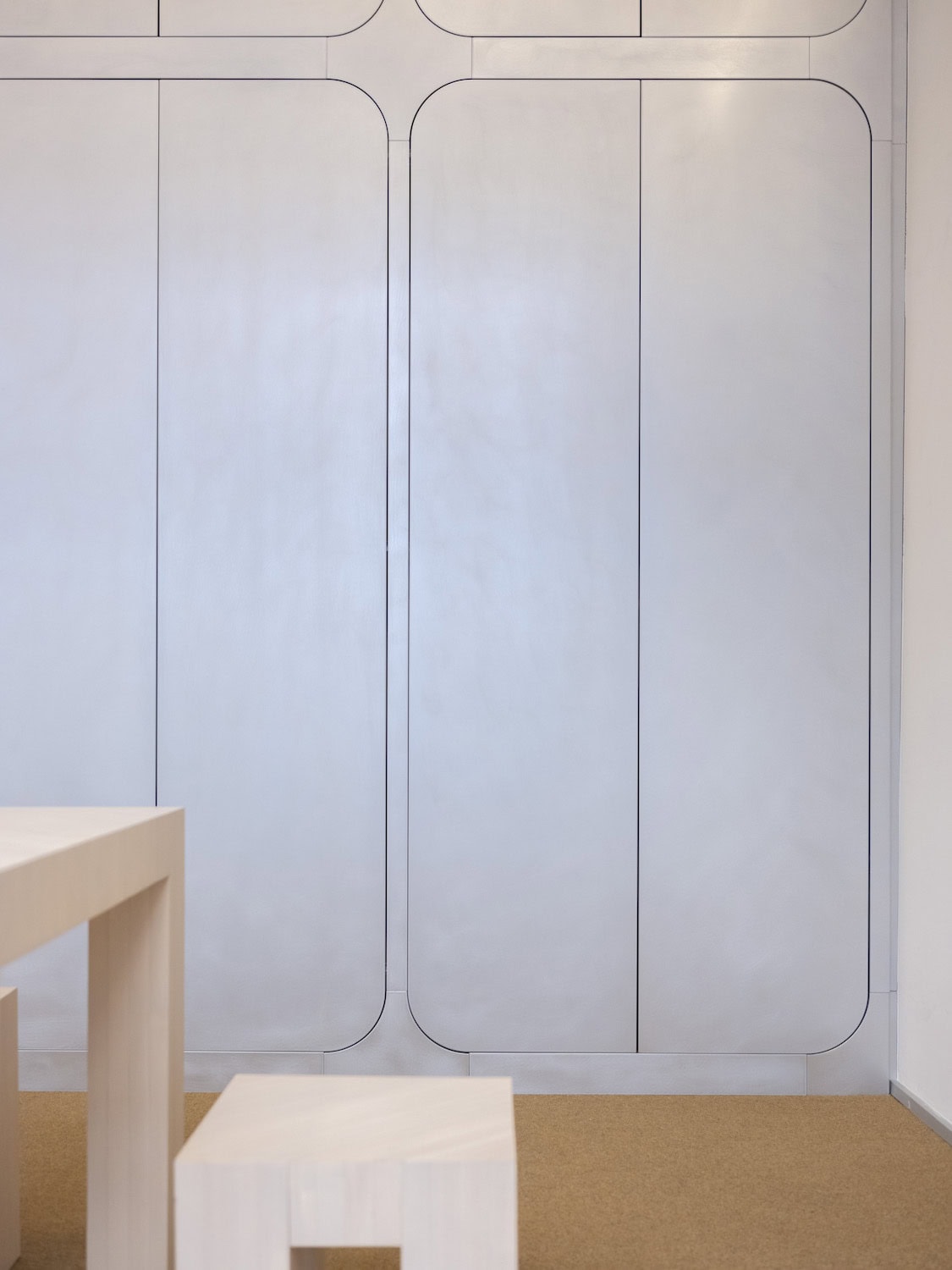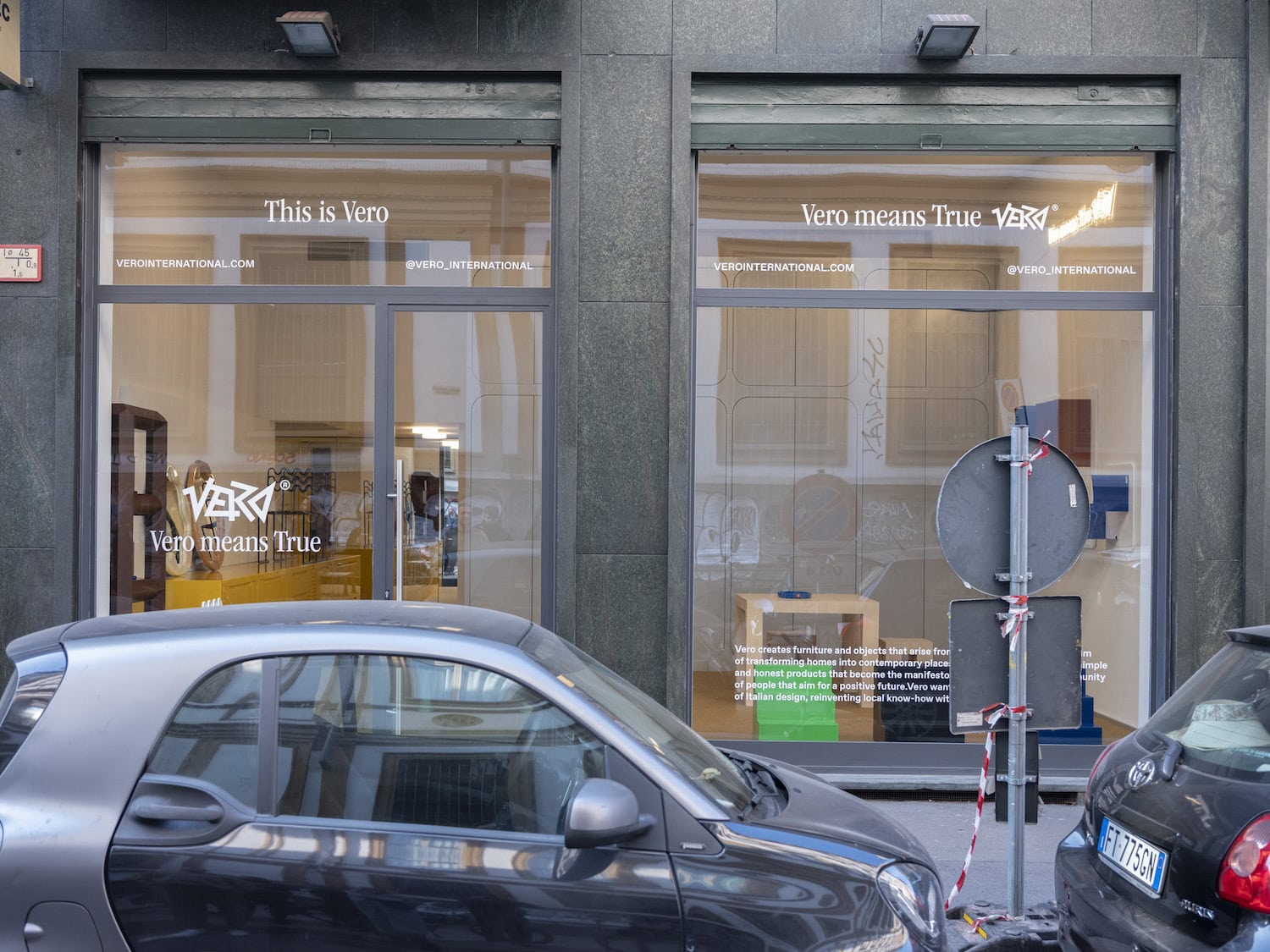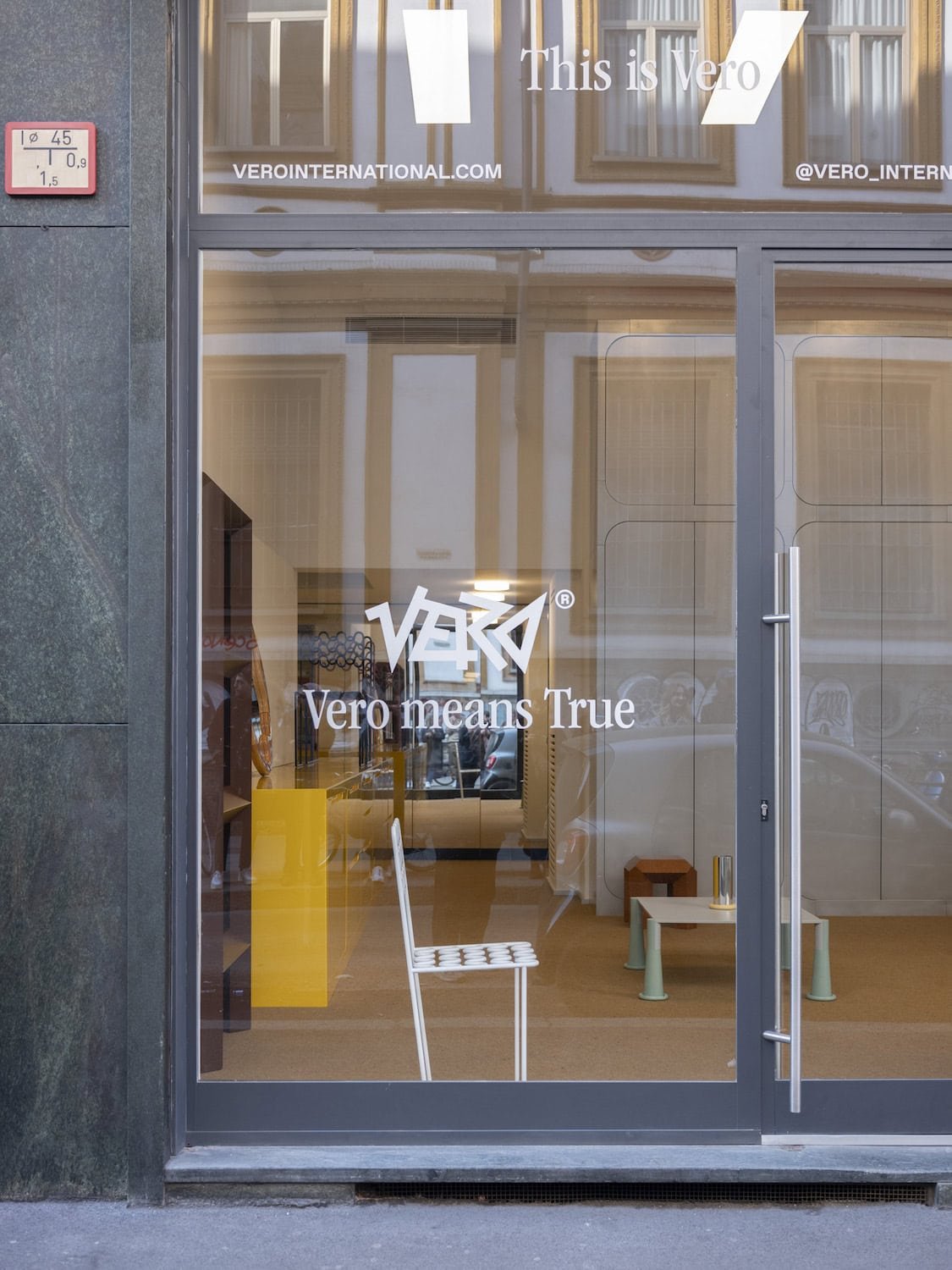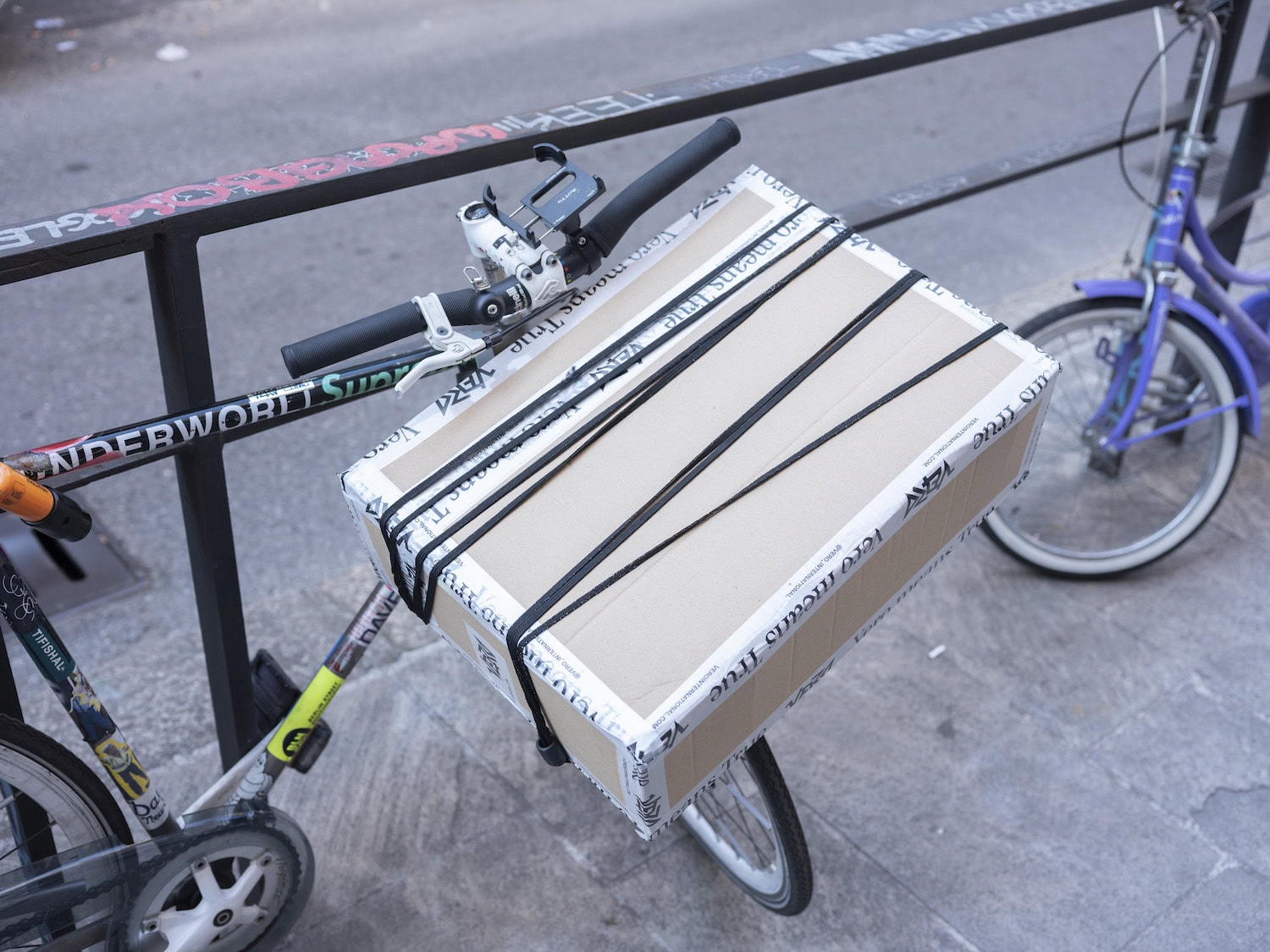It is Spring 2022 and a question starts to circulate within the Milanese design scene: what is Vero? A few weeks passed and the first collection of a new brand was presented in Milan—still the epicentre of international design—and all doubts and questions are dissolved. We are faced with a new brand of objects, furniture and accessories designed by a group of Italian and international designers, under the artistic direction of Simona Flacco and Riccardo Crenna, founders of Simple Flair. Vero International is thus real. A year after those launch weeks, we find Simona and Riccardo in the new showroom in via Felice Casati 3 and around the table with us there is Lina Huring, founder together with Maria Johansson, Helena Svensson and Cecilia Wahlberg of Studio Navet, a multidisciplinary studio based in Stockholm. It is the day of the launch of the new collaboration between Vero and Navet and the opening of the brand’s showroom. A year later, indeed, Vero has grown, taken its place in the scene and today has decided to also have a physical presence in the form of a Flagship Store, a house overlooking the street where you can enter and touch the brand’s objects. Creating a new brand in Italy, in Milan, in 2022 is in itself a tough challenge; identifying a strong, contemporary and fresh language even more. However, it seems that Vero is succeeding in its intention to shake up the slumbering reality of contemporary Italian design, perhaps still sitting on the shoulders of the masters and in the shadow of the factories of the brands that have made its history. Vero’s objects draw on a happy moment in Italian design and seek to add a contemporary impetus made up of contemporary colours, materials, volumes and proportions, all with workmanship worthy of a company with many more years of experience behind it. We start here to talk with Lina, Simona and Riccardo sitting around a table in the centre of the new Vero’s showroom, which is more like a room open to the light and fresh wind of things changing.
Tommaso Caldera: Hi Lina, please introduce us to your studio.
Lina Huring: I’m Lina Huring, co-founder of Navet. Navet means “new and very exciting things”. I am based here in Milan and my three other co-founders are based in Stockholm and we are all Swedish. We are a multidisciplinary design studio working a lot with product design and furniture, but also interiors and concept development strategies. We do a little bit of production ourselves and then we also do collaborations like the one that brought me here today.
TC: How do you combine these two sides of the studio—collaborations with brands and your own production?
LH: It’s quite fine actually, we do it even for companies in Sweden. We design products for them, but we also promote ourselves. It’s always a matter of communication in the end.
TC: How did you get in touch with Vero? How did this collaboration start?
LH: They contacted us this summer and we had been following them since the start, so we were very happy about that.
TC: How would you describe the new collection you have designed for Vero?
LH: We were very inspired by the word Vero and the communication around finding the truth. So for this shelf, we were very inspired by the endlessness of the universe and we wanted to make a very simple product, but with endless opportunities.
TC: Is one single module.
LH: Yes, one single module in four colours.
TC: Have you decided the colours together with the Art Director?
LH: Yes, we had a close discussion.
TC: How was the developing process of this product? Was it easy?
LH: It was quite easy, yes. We have a very good and easy-going collaboration, and we found the idea for this product quite quickly. We then explored different shapes and structures, but we soon landed at this kind of slight bend in the edge, just to create a little bit of tension.
TC: Is this a typology that you decided to work on together or it’s something that you have been investigating before?
LH: It is absolutely related to our previous objects, being a quite simple shape. The way we work at Navet is that we are all founders and designers. So we are all involved and we kind of take over each other projects. But yes, it is absolutely related both in the colour scheme and in the shape to our previous products.
TC: So you said Navet is a collective for designers. I am inquisitive about the design process on your part in the collective. I guess every one of you has different skills that can combine with each others’. What kind of process and workflow do you follow when you work as a team?
LH: The word “collective” it’s sometimes quite loose, but we are a very close collective and we all have similar backgrounds. We are all either industrial designers or furniture designers by education. We all worked for a while in retail and interior architecture firms. So, of course, we have different skill sets and roles, but when it comes to the design process we are all very much involved. And the way we usually work is that we set a very strict box of limitations at the beginning of the project, and then we kind of push it from that small base.
TC: I am an industrial designer and, living here in Italy, I think there is a sort of new wave of Scandinavian design. There are a lot of new companies and new designers that are doing a really good job. I wonder if you are conscious that you are part of this new movement and also, if you have an opinion, which is the reason why you grow up so much during the last few years.
LH: I think there are a couple of moments that we are part of. I think what happened a lot lately is that people are starting to make things which we have been doing quite a long time ago. There is a real rise of companies that design and produce and make things in new ways, and I think we are also part of a Scandinavian approach, but with much more colour. The language is still similar, but I think there is one side that is growing a lot such as very natural wood, linen and glass, and another side which is more colourful. We are more part of the last one, and we often hear that we are kind of expressing a Scandinavian form language, but with a southern colour language. And then I think that the whole movement of making and producing things at a smaller scale, it’s not only in Sweden: it’s global.
TC: Do you think that the smaller case is one of the reasons for this success?
LH: Yes, and to be able to take control of the whole process and do it in better and more relevant ways.
TC: My last question for you is about the last two years of the pandemic period. Do you think that the pandemic has changed our way of being related to objects as a designer? We have spent a lot of time in our apartment and, as a designer, have you noticed something different in your relationship with the objects?
LH: It’s a very good question. I mean we absolutely noticed this in terms of business, as it changed a lot. We used to work on a lot of offices and retail before but then, with the pandemic, we completely stopped. Luckily we have the object’s side, which is more about objects for private customers and for the home, so we could kind of grow that instead. I like how you put the question like “how do we interact with objects” because, as you say, we spent a lot more time at home: we put much more attention to the details in our homes and care a lot more about it—and maybe also clean it up a little bit! A lot of people got rid of things and just chose only a few items that they really needed, or wanted, in a more emotional way.
TC: Thanks, Lina. Now I have some questions for Simona and Riccardo but of course, you can join our discussion. Simona and Riccardo, first of all, would you like to tell us something about the collection you are doing and the new products?
Simona Flacco: This is an important moment for Vero because, after 10 months, we are presenting ourselves to the community again with the first official permanent Vero space, which is not just a showroom, but a meeting point. This is what Vero wants to be: a collector of stories—stories of design and stories of people. We would like this space to become the home of these stories, of course, and then, in addition, we use it also to showcase new products. There is the new drop focused on the collection designed by Navet, but there are also the colour and material variants that recount the growth of the brand. All these ingredients are, for us, proof that the path we embarked on ten months ago is going in the direction we imagined at the very start.
TC: Riccardo, you are the Art Director of Vero since the beginning. As I asked Lina how she got in touch with Vero, I’d also like to know how you started collaborating with Vero, and how the story started.
Riccardo Crenna: Let’s say that the story is very interesting because Vero was born from the meeting between us and Pasquale Apollonio, who is the founder. We crossed each other for another project actually and then, talking about it, a possibility of collaboration emerged. We had an idea in the box, doing consulting for product companies for fifteen years and having matured our own point, we had the desire to do something that was more meaningful and that would go in a certain direction, which in Italy is a little bit harder to find.
TC: Dare I say it’s very un-Italian as a brand, can we say that?
RC: That was the challenge. We were aware of the fact that in Italy there is a history and a know-how linked to the world of design that is undeniable, but in the last ten-twenty years, something got lost a little bit, in terms of experimentation. People take few risks, and this has obviously given a lot of space to new and very interesting contemporary brands. For example, North European, American, or European in general, have proved to be more interceptors of contemporaneity. This left us with a bitter taste in our mouths, so talking it over with Pasquale we said “well, let’s start this journey, let’s do it together”. This was very nice because this partnership brings into play a production know-how that is precisely that of the parent company led by Pasquale. As you can feel by touching some pieces, they’re of incredible quality, repurposing the famous made-in-Italy, and bringing that into a communicative and more contemporary dimension.
TC: You’ve already touched this theme, but one of my next questions would be: how difficult is it in 2022/2023 to create a new design brand? Not in general but in Italy—not just in Italy but in Milan—with all the history we have? And what is the practical difference between creating a brand now, compared to creating a brand in the 60s/70s—in those historical years that made a bit of Italian style?
RC: It’s difficult. Let’s say that the real heart of this answer is not to focus only on the product. There was a time when companies were just companies, and you had to create an undeniable winning product, that could surf the market organically. Today the product is something fundamental, a sine qua non. For me, the product is important but equally important is its story, its personality and the contribution it can bring to the brand, not just as a product. So what does that mean today? It means creating a brand where people can find belonging, something that goes beyond the theme of the product. This point needs to be explored a bit, but the direction is this one.
TC: As Art Directors who hold the reins of the brand, how would you describe Vero if you couldn’t show the products? This is also for Lina, how would you tell Vero to your fellow designers without showing the products?
RC: I would tell it with a beautiful party or dinner at a friend’s house, with super good vibes, where people are very happy to be there, but not for a question of FOMO—which is typical of the contemporary—but for the pleasure of sharing something with people in its absolute sense, in doing something together.
LH: Yes, absolutely.
TC: So you, Lina, immediately felt these things that Riccardo says, without knowing you?
LH: Yes, immediately from the moment we spoke, we felt this feeling of generosity and warmth.
RC: It’s very nice because in all the meetings with the designers—but also with Studio Temp, with whom we developed the graphics—I immediately realised that there was a professional but informal and positive conversation, which is an important characteristic that we believe in.
TC: Beyond living the brand in a more organic and free way, do you have any guidelines that you’ve drawn yourself that you can’t ignore?
RC: Well, certainly there are guidelines, mostly from a mood point of view.
SF: In any case, we initially wrote a sort of brand values manifesto and we’re trying to make sure that both the products, the activities and the communication fall within those tracks. Then we put our faces on it by telling you what is happening behind the scenes, but we would like to emphasise that all this has been possible for us in 10 months because we have worked from the beginning with a dream team of people, who have believed in it from day zero, and have put a lot of commitment and passion into it. Probably, for those who work in the design field, there was a lack of a brand where they could experiment and express themselves, where they could take risks and make mistakes while believing in it.
TC: More generally, what should an Art Director do in 2023 in Milan, Italy?
SF: You have to have a long-term vision of what you want the brand to be. You cannot think in weeks, months or design week by design week. Your vision must be made up of values, within which you have to build stories, which can be about communication, products, and choosing which city to present a new drop in, but you have to be based on values. At the end of the day, the final consumer is looking for this: he buys because he identifies himself with the brand, not because he needs something.
TC: Riccardo, you’ve already touched on this topic, but one thing that interests me a lot is the relationship between physical objects and their digital representation. Vero has created a physical space in which to present products, so is it still important for a brand to have a physical showroom, a physical presence? Why?
RC: Absolutely yes. Our theory is very simple, there is no distinction. Every time a person comes into contact with the brand—in whatever capacity they do it, whether on social networks, showroom on a hat they see on someone’s head at an event or going into someone’s home and seeing a product—they are coming into contact with the brand and therefore with the values and everything that we say. So the heart of this discourse is: don’t conceive a division but conceive a union between all these points, that is as if they were all links of the same chain, that must work in unison. Then, it is clear that today is easier to start a nice Instagram profile than to open a physical space in the centre of the city, both in economic terms and in terms of effort. However, they are two different tools that have the same goals; let’s simply say they are like two different roads leading to the same destination. The more roads there are, the more people will reach the destination.
TC: This is also for Lina. In your experience, do people still need to see objects and touch them?
LH: People need to have a space, maybe sometimes to see products, sometimes to talk and meet someone… I have worked a lot with retail design and I definitely know that the store is not just a store, it is not just a display of products.
RC: Of course. If you compare it to fashion, for example—which is a classic comparison that is usually made—there are differences. You buy a couch once every 10 years, maybe, but you buy a t-shirt every season, so even the type of purchase without seeing the product online of a fashion product is different.
TC: There’s also this naive belief that, if I just see a picture of an object, I can buy it, whereas with clothes I have to try them on. But when you actually go and see an object, everything changes. Maybe there’s not so much education about going to see objects.
RC: I would like to tell you something that I think is very important about Vero. Those who come into contact with the real thing in person, immediately perceive the great quality of the initiative. Strategically we have not aimed at incredible ostentation of this quality, because for us it is a must: it is precisely the attitude of making people discover a quality that differs from low-quality of merchandising. For us, this is a great added value.
SF: But even when there are objects that are complex from a production point of view, we have never put a communication focus on telling the story of those products. For example: “Look, it was an incredible struggle to make this thing”. We assumed it was normal to achieve that quality, and then the person who arrives and touches it says “wow”. That’s the kind of emotion we would like to see when you come into contact with Vero pieces.
LH: Going back to the theme of the shop, in my opinion, the space also becomes like the house: a window into Vero. Space is always important, also digitally.
TC: Maybe it is also proof that it really exists. By the way, are you already doing something for the Salone del Mobile?
RC: Yes, we are working on Drop 4, which will be dedicated to the first year of Vero. There will be a new drop with new designers, new names and new pieces. Let’s say the catalogue will be much more substantial, which was kind of the goal we set for the first year.
TC: Lina, will you be in Milan with Navet for the Salone del Mobile?
LH: Yes, absolutely. We’re going to do something with Vero, and also another artistic project after it.
